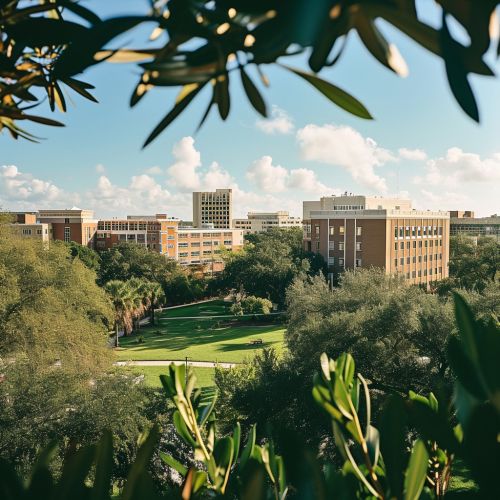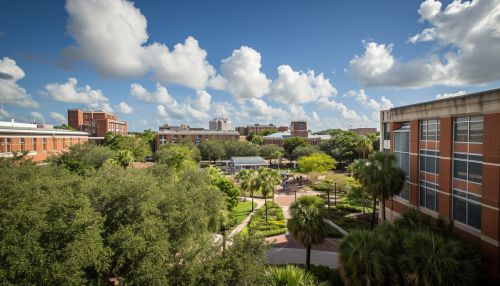University of Florida
History
The University of Florida (UF) is a public land-grant, sea-grant, and space-grant research university in Gainesville, Florida. It is a senior member of the State University System of Florida and traces its origins to 1853 and has operated continuously on its Gainesville campus since September 1906.
The University of Florida is one of sixty-two elected member institutions of the Association of American Universities (AAU), the association of preeminent North American research universities, and the only AAU member university in Florida. The University is classified among "R1: Doctoral Universities – Very high research activity".


Academics
The University of Florida offers more than 200 undergraduate and graduate degree programs in a wide range of disciplines. It is organized into 16 colleges and schools, which offer a diverse array of programs and specializations. The university's academic departments are organized into a number of schools and colleges, each of which has its own administration, including a dean, associate deans, and an academic senate.
The university's academic prowess is broad, with its most notable academic strengths in the areas of business administration, engineering, law, and the health professions. The University of Florida College of Medicine is part of the university's Health Science Center, which also includes the colleges of Dentistry, Public Health and Health Professions, Nursing, Pharmacy, and Veterinary Medicine.
Research
The University of Florida is a major research institution, with more than 150 research centers and institutes. It is one of the top universities in the country in terms of research expenditures, which total more than $900 million annually. The university's research programs are notable for their interdisciplinary focus and their emphasis on innovation and practical application.
The university's research facilities include the McKnight Brain Institute, the Florida Museum of Natural History, the Harn Museum of Art, and the Whitney Laboratory for Marine Bioscience. The university also operates several state-of-the-art facilities for scientific research, including the National High Magnetic Field Laboratory, and the Interdisciplinary Center for Biotechnology Research.
Campus
The University of Florida's campus spans 2,000 acres and includes more than 900 buildings. The campus is home to numerous notable landmarks, including the Century Tower, a 157-foot tall carillon tower in the center of the campus, and the Baughman Center, a chapel and event space on the shores of Lake Alice.
The campus is also home to several museums, including the Harn Museum of Art and the Florida Museum of Natural History, as well as the Butterfly Rainforest, a live butterfly exhibit.
Athletics
The University of Florida's athletic teams, known as the "Florida Gators," compete in Division I of the NCAA and are members of the Southeastern Conference. The Gators have won numerous national championships in various sports, including football, basketball, and baseball.
The university's athletic facilities include Ben Hill Griffin Stadium, also known as "The Swamp," which is one of the largest football stadiums in the country, and the Stephen C. O'Connell Center, a multi-purpose arena and student activity center.
